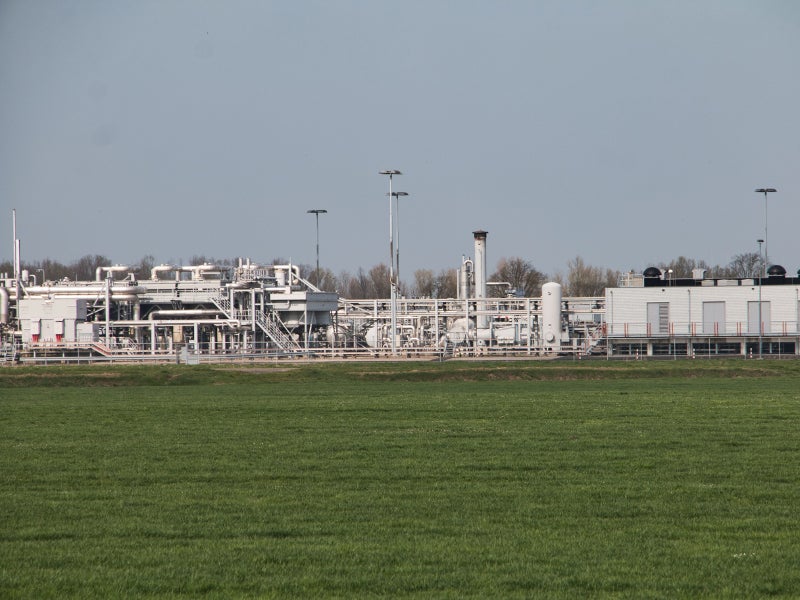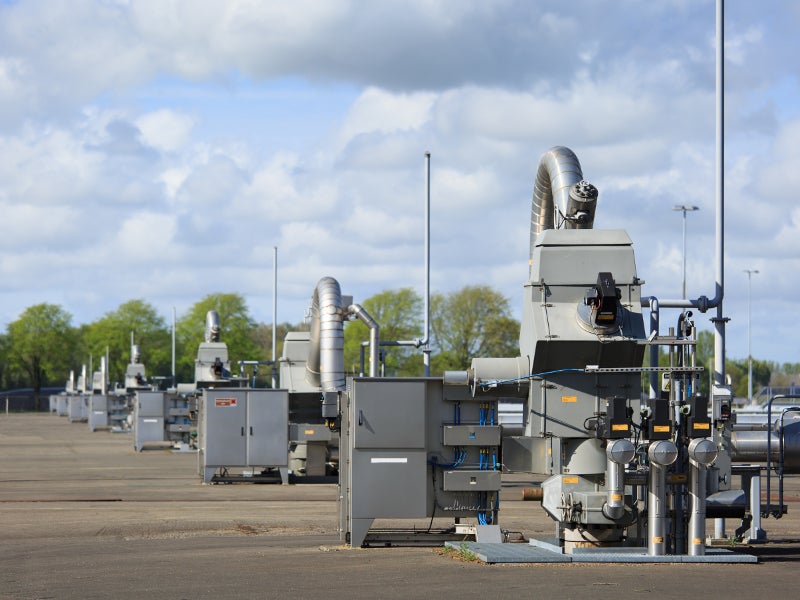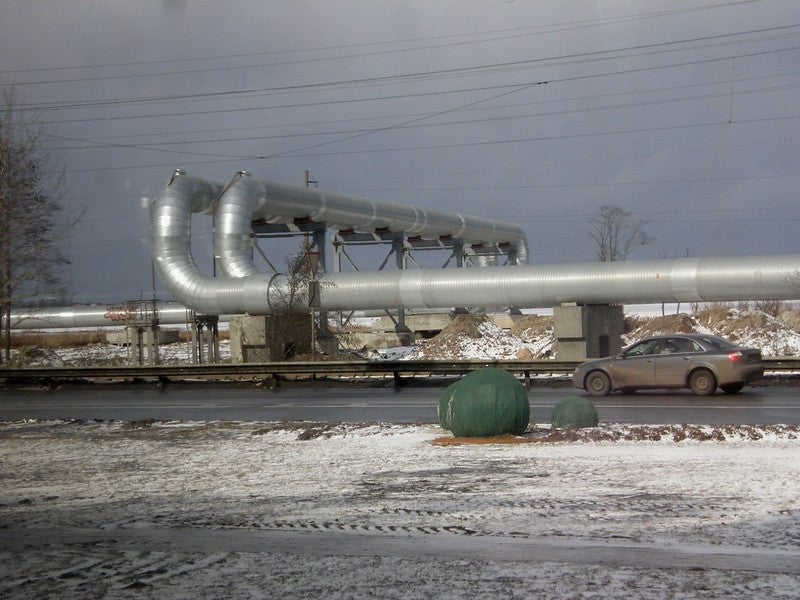Located near Slochteren, Groningen Province, Netherlands, the Groningen gas field is the biggest gas field in Europe. The onshore gas field was discovered in 1959 and has been producing since 1963.
Groningen accounts for more than 40% of the total gas consumption in the Netherlands. The giant gas field was estimated to contain initial recoverable gas reserves of 2,900 billion cubic metres (bcm), while the remaining gas reserves are estimated to be more than 700bcm.
However, in view of numerous earthquake incidents induced by the Groningen field operations, gas extraction from the field has been phased out since 2014 under the Dutch Government decree. The current plan is to permanently shut down the gas field operations as early as 2022.
Groningen gas field operator, ownership, and profit-sharing details
The Groningen gas field is operated by Nederlandse Aardolie Maatschappij (NAM), a 50:50 joint venture between ExxonMobil and Shell.
NAM holds a 60% interest in the Groningen gas field, while the remaining 40% is held by Energie Beheer Nederland (EBN), a Dutch government entity.
The Dutch government previously earned 90% of the profits from Groningen operations, while NAM was responsible for all earthquake-related costs.
The Dutch state, however, has been receiving 73% of the profits from 2018 and is responsible to bear the same share of earthquake repair costs.
Groningen gas field reservoir details
The Groningen gas field spreads over 35kmx25km. The field’s reservoir lies within the Northwest Europe’s Southern Permian Basin that extends from the UK’s eastern coast to Poland. It comprises Upper Rotliegend Group sandstone formations of the Early Permian age.
The field reservoir is located at depths between 2,600m and 3,200m, while its thickness ranges from 100m in south-southeast to 300m in north–northwest.
The natural gas of the Groningen reservoir contains approximately 14% of nitrogen, which is relatively higher compared to the other gas fields in the Netherlands.
Approximately 2,000bcm of gas was produced from the field by the end of 2015. The initial reservoir pressure was 347bar, which dropped to 95bar in 2016 due to reservoir depletion.
Groningen field infrastructure
The Groningen gas field comprises more than 250 production wells spread over 22 production sites.
Of the 22 production locations, 20 are developed with their respective gas treatment facilities, while gas produced from the remaining two sites is transported to the nearest gas-treatment facilities by pipelines.
The field also features 28 observation wells for reservoir management, as well as numerous injection wells to inject water back into the reservoir.
Gas off-take from Groningen
Dutch natural gas wholesaler GasTerra, which is a joint venture of Shell (25%), ExxonMobil (25%), and the Dutch government (50%), is the exclusive purchaser of gas from the Groningen field.
It sells gas in the domestic market as well as to energy companies in Germany, Belgium, and France, under long-term contracts.
Groningen gas field clean-up
The dismantling works as part of the scheduled Groningen field decommissioning were started in December 2019.
Five gas extraction sites near Loppersum, namely Ten Post, Overschild, De Paauwen,‘t Zandt, and Leermens, where gas production has already ceased, are planned to be cleaned up initially.
Removal of over-ground installations at Ten Post was started in December 2019 and is expected to be completed in early-2020. It will be followed by the removal of underground installations.
Contractors involved in the Groningen field decommissioning
Meuva, a dismantling company based in South Holland, was contracted to carryout dismantling and removal activities at the Ten Post gas extraction site in October 2019.
Groningen Long Term (GLT) renovation and maintenance contractors
NAM initiated a £1.3bn ($1.75bn) Groningen long-term (GLT) project for the renovation of the field’s production clusters with the installation of 23MW compressor trains in each cluster for greater operational efficiency in 1997.
A consortium comprising Fluor’s subsidiary Stork, Jacobs, Siemens, Yokogawa, and Siemens Demag Delaval was selected for the engineering, procurement, and construction (EPC) as well as maintenance services for the renovated clusters for a period of 25 years.
Stork was the construction and maintenance contractor, while Jacobs was the engineering contractor.
Yokogawa provided the direct control systems (DCS) and the safeguarding systems, while Siemens supplied the 23MW variable-speed drive Systems and Siemens Demag Delaval supplied the centrifugal compressors.
Earthquakes and Groningen gas field closure schedule
Seismic activity has been reported in the Groningen gas field since the early-1990s. The first tremor measuring 2.4 on the Richter scale occurred in December 1991.
A total of 900 seismic events were reported by the end of 2015, out of which 256 were of more than 1.5 magnitudes.
The intensity and frequency of the earthquakes increased after 2000. The highest magnitude earthquake reported so far is the one that occurred in August 2012 measuring 3.6 on Richter scale.
The Dutch Minister of Economic Affairs started capping the gas production from the field from January 2014 onwards, after studies established drilling and gas extraction as the reasons behind recurrent seismic activities in the region.
Further, a 3.4 magnitude earthquake causing massive loss of public property in the region in January 2018 triggered public outcry against Groningen gas production. It prompted the government to further lower the cap of gas output to limit seismic risks, while announcing the permanent closure of the field by 2030.
A total of 15 tremors were reported in 2018, while another 3.4 magnitude earthquake that struck in May 2019 led the Dutch government’s decision to drastically reduce gas production with an intention to ultimately shut down the Groningen gas field by 2022, eight years ahead of its original closure schedule.
Gas production caps for Groningen
The peak annual gas production from the Groningen field stood at 88bcm in 1976, which fell to 54bcm in 2013.
According to the government decisions starting from January 2014, the field was allowed to produce up to 42.5bcm in 2014, 39.4bcm in 2015, 27bcm in 2016 and up to 24bcm of gas a year until 2021.
Following the 2018 earthquake incidence, the government decided to limit the total gas production between October 2018 and October 2019 to 19.4bcm. The field actually produced 17.5bcm of gas during the same period.
In September 2019, the government further decided to reduce the gas output from the Groningen field to 11.8bcm during the 12 months from October 2019 to October 2020.





